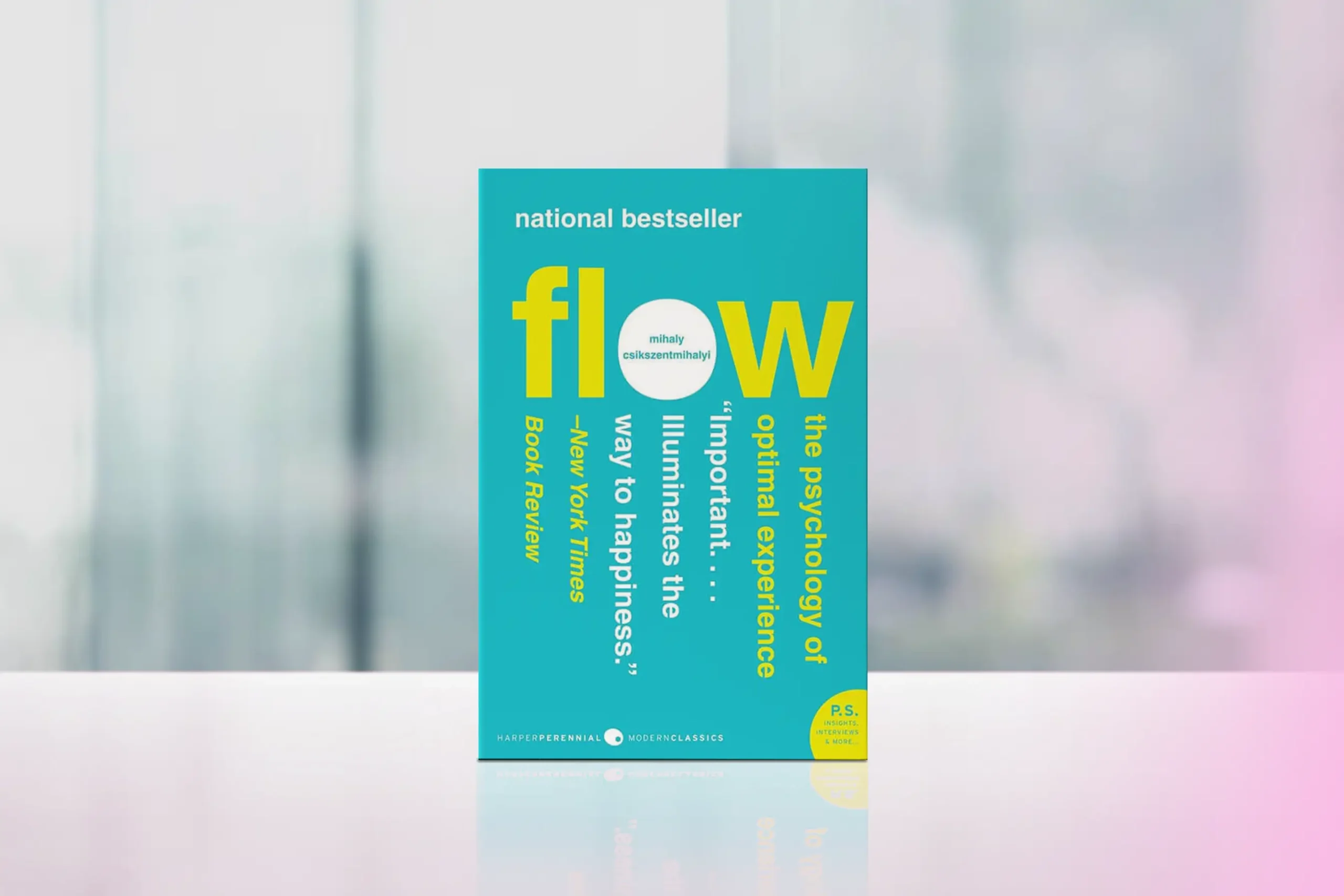Why is it that even after earning more money, buying a dream home, or achieving career goals, so many people still wonder, “Is this all there is?” Research shows that regular grateful thinking can boost happiness by as much as 25 percent.
Lasting happiness isn’t just about reaching milestones—it comes from learning how to be happy in everyday moments. Through gratitude and perspective shifts, we begin finding contentment not in what’s missing, but in appreciating what we already have.
Inside this article:
TL;DR
Research shows lasting happiness comes from appreciating what you already have, not chasing more achievements. Gratitude practice can boost happiness by 25% and literally rewires your brain for contentment. The key difference: happiness depends on external circumstances and fades quickly, while contentment is internal, stable, and sustainable. Positive emotions literally change your brain, but you can train your mind for lasting satisfaction through small daily habits like mindfulness, gratitude, and self-reflection. By recognizing and overcoming barriers like comparison and stress, and following a structured 30-60-90 day practice, anyone can cultivate deeper contentment and a more fulfilling life.

1. What it Means to be Happy vs Content
Have you noticed how quickly new purchase excitement fades? That dream car loses magic after months, promotions thrill diminishes, and you’re seeking the next achievement. This isn’t personal failing—it’s psychology.
How happiness differs from contentment. While happiness depends on external circumstances, contentment represents deeper satisfaction with current reality. True happiness, as Dr. Robert Emmons explains, comes from “appreciating what you have instead of always reaching for something new.”
Happiness vs Contentment
Understanding the difference between happiness and contentment is crucial for finding lasting satisfaction. While these terms are often used interchangeably, they represent fundamentally different emotional states that impact your well-being in unique ways.
Happiness is:
- External and circumstantial
- Temporary and fluctuating
- Dependent on specific achievements
- Emotion-driven and reactive
- Often tied to pleasure-seeking activities
Contentment is:
- Internal and independent of circumstances
- Stable and enduring
- Based on acceptance and appreciation
- Choice-driven and proactive
- Rooted in meaning and purpose
When we experience happiness, our language often focuses on specific events or external achievements that bring us joy. In contrast, contentment is reflected in statements that appreciate the present moment and a sense of inner fulfillment, regardless of external circumstances.”
| Happiness | Contentment |
|---|---|
| I’m happy because I got the promotion | I’m content with my career growth journey |
| This vacation makes me happy | I appreciate having time to rest and recharge |
| I’m happy when people like me | I’m content with who I am, regardless of others’ opinions |
| Shopping makes me happy | I’m grateful for what I already own |
The goal isn’t to choose one over the other, but to cultivate contentment as your foundation while still enjoying moments of happiness. When you’re content, happiness becomes a delightful addition rather than a desperate necessity. This shift from chasing happiness to building contentment creates the psychological stability needed for true well-being.
Research shows that people who focus on contentment report higher life satisfaction, better relationships, and greater resilience during challenges compared to those who primarily pursue happiness through external means.
The Gratitude-Contentment Connection
Gratitude shifts focus from scarcity to abundance. When you actively appreciate relationships, experiences, and opportunities, your brain recognizes richness previously overlooked.
Research by the University of Berkley, with over 1,000 participants shows that practicing gratitude regularly brings lasting happiness. Unlike temporary happiness spikes, gratitude cultivates lasting happiness by training your mind toward positives rather than dwelling on what’s missing.
Two Types of Wellbeing
The two types are Hedonic wellbeing, which focuses on pleasure, enjoyment, and external rewards, and Eudaimonic wellbeing, which centers on meaning, personal growth, and lasting fulfillment. Contentment emerges from eudaimonic wellbeing—finding meaning in current circumstances rather than chasing external rewards.
| Hedonic Wellbeing | Eudaimonic Wellbeing |
|---|---|
| Seeking pleasure and immediate enjoyment | Seeking meaning and purposeful living |
| Relying on external approval or validation | Feeling deep internal satisfaction and contentment |
| Experiencing short-term, temporary happiness boosts | Cultivating long-term, sustained fulfillment and growth |
Understanding The Role of Purpose in Achieving Long-Term Happiness provides deeper psychological insights into sustainable well-being.
Key Takeaway: Contentment isn’t settling for less; it’s recognizing existing abundance while maintaining healthy growth ambition.

2. How Happiness Changes Your Brain
Your brain operates on the “hedonic treadmill“—quickly returning to baseline happiness despite major events. This phenomenon, known as hedonic adaptation, explains why lottery winners return to pre-winning happiness levels within months. This adaptation once helped survival but now traps us in perpetual dissatisfaction, making finding happiness through external achievements ultimately futile.
Neuroplasticity of Gratitude
Gratitude doesn’t just shift your mood—it reshapes your brain. Neuroscience research shows that regularly practicing gratitude activates areas linked to reward, empathy, and decision-making, including the prefrontal cortex and anterior cingulate cortex. Over time, these strengthened pathways make it easier to focus on positives instead of stress or scarcity.
One of the most powerful examples of this comes from simple habits like gratitude journaling or letter writing, which have been shown to boost happiness while producing measurable changes in brain activity. Gratitude isn’t just a pleasant feeling—it’s a science-backed way to train your mind for lasting resilience and well-being.
Physical Health Benefits
The benefits of gratitude go beyond mood—it also strengthens the body. Research shows that grateful individuals experience measurable improvements in health markers:
- Stronger immunity: 16% fewer reported illness symptoms
- Lower blood pressure: average reduction of 5–10 mmHg
- Better sleep: 25% improvement in sleep duration and depth
- Reduced inflammation: lower levels of key inflammatory markers
- Enhanced cardiovascular health: improved heart rate variability and overall resilience
By lowering stress and supporting restorative processes, gratitude supports both mental and physical well-being in a reinforcing cycle.
Breaking Comparison Traps
Social media often fuels dissatisfaction through constant comparison. Those curated feeds and highlight reels of others’ lives can leave us feeling inadequate. Gratitude and contentment practices disrupt this cycle by shifting attention inward. Instead of measuring your worth against someone else’s milestones, gratitude builds appreciation for your own journey.
When people actively note personal progress and express appreciation for everyday experiences, feelings of envy decline. This makes it easier to genuinely celebrate others’ successes while staying grounded in your own growth. Over time, practicing gratitude not only reduces comparison but also strengthens resilience, self-acceptance, and overall life satisfaction.
Exploring Redefining Success: Breaking Free from Societal Expectations offers strategies for resisting external pressures that undermine contentment.
Key Takeaway: Contentment provides measurable physical and mental benefits by rewiring your brain’s reward system toward present satisfaction.

3. Rewiring Your Brain for Happiness
Changing your approach to happiness requires understanding how your mind processes satisfaction. Neuroscience proves your brain possesses remarkable plasticity—the ability to form new neural pathways throughout life. By shifting how you define and pursue happiness, you can literally reshape how your mind experiences fulfillment.
The Happiness Misconception
Most people approach finding happiness backwards. They believe the formula is: Success → Happiness. “I’ll be happy when I get the promotion, buy the house, find the relationship.” Research from Harvard psychologist Shawn Achor reveals this formula is broken. His studies and dozens of companies worldwide demonstrate the reverse is true: Happiness → Success.
When your brain operates from positivity and contentment, performance improves dramatically. Happy people are:
- 31% more productive
- 37% better at sales
- 3x more creative in problem-solving
- 10x more engaged at work
Reframing Your Internal Narrative
Your brain constantly creates stories about experiences. Traditional happiness-seeking creates deficit-focused narratives, while contentment practices develop abundance-focused thinking:
| Old Happiness Approach | New Contentment Approach |
|---|---|
| “I’ll be satisfied when I have more money/status/achievements.” | “I can appreciate what I have while working toward meaningful goals.” |
| “My life lacks excitement and adventure.” | “I can find richness and meaning in ordinary moments while creating extraordinary experiences.” |
This isn’t toxic positivity—it’s realistic optimism that acknowledges challenges while recognizing existing positives and possibilities.
The Neuroscience of Satisfaction
Research identifies key brain mechanisms that determine happiness levels:
- Adaptation Networks: Your brain adapts to positive changes, explaining why achievements provide temporary satisfaction. Combat this through variety and conscious appreciation.
- Comparison Centers: Brain regions constantly evaluate your position relative to others. Social media amplifies this, creating dissatisfaction. Contentment practices reduce comparison-based thinking.
- Reward Prediction: Your brain seeks dopamine hits from anticipated rewards. Shifting focus from future achievements to present appreciation provides more consistent satisfaction.
Present-Moment Happiness
Present-moment awareness amplifies satisfaction.When we pause to fully experience life’s simple moments—savoring a warm cup of coffee, sharing a meaningful conversation, or feeling safe in our homes—ordinary experiences become extraordinary. This kind of mindfulness shows us that happiness isn’t found in rare events or expensive escapes, but in appreciating what’s already here.
Harvard researcher Matt Killingsworth analyzed data from 15,000 people and found a striking truth: we are happiest when fully engaged in the present moment, and least happy when our minds wander. This insight reshapes how we understand and pursue happiness.
Savoring Techniques
Research identifies three key approaches that enhance life satisfaction:
- Anticipation: Looking forward to positive experiences increases happiness before they occur
- Present-moment awareness: Fully experiencing good moments multiplies their impact
- Reminiscence: Reflecting on positive memories extends their happiness benefits
Each technique activates different brain regions associated with pleasure and satisfaction, creating multiple pathways to contentment.
The Gratitude-Happiness Connection
Gratitude serves as happiness training for your brain. When you regularly practice appreciation, neural pathways linked to positive emotions strengthen while deficit-focused thinking weakens. This creates an upward spiral: gratitude increases happiness, which makes you notice more to appreciate.
Dr. Robert Emmons’ research shows gratitude practices don’t just make you feel good temporarily—they create lasting changes in brain structure that support sustained well-being. Mother Teresa expressed gratitude to people she served because they enabled her growth. Gratitude for what you give, not just receive, creates deepest contentment. Your appreciation practice benefits everyone your life touches.
Learning about Mindfulness Techniques for Everyday Life provides practical tools for developing present-moment awareness that supports this brain rewiring process.
Key Takeaway: Your brain’s plasticity means you can train yourself toward happiness through appreciation and present-moment awareness, making contentment a learnable skill rather than depending on external circumstances.

4. Daily Practices to Cultivate Contentment
The path to finding happiness isn’t about acquiring more. True happiness is about appreciating what you already have while remaining open to growth. These following daily happiness habits form the foundation of sustained wellbeing:
Your Daily Contentment Process
Morning Appreciation Ritual (5 minutes)
- Write three specific things you’re grateful for with details about why they matter
- Include sensory elements: “The warmth of my coffee mug in my hands”
- Focus on people, experiences, or opportunities rather than just material items
- Reflect on why each item matters to you personally
Midday Mindfulness Check-in (2 minutes)
- Pause and notice one positive aspect of your current moment
- Practice the “STOP” technique: Stop, Take a breath, Observe, Proceed mindfully
- Send one appreciation message to someone in your life
Evening Reflection Practice (3 minutes)
- Review the day for moments of satisfaction or joy
- Acknowledge challenges you handled well
- Set intentions for tomorrow based on gratitude rather than anxiety
Advanced Practices
Gratitude meditation
- Spend 10-15 minutes focusing on appreciation, using all five senses to enhance the experience
Appreciation walks
- During walks, consciously notice and appreciate what’s around you—architecture, nature, people.
Difficult situation reframing
- Practice finding small positives even during challenges and tough times.
Key Takeaway: Consistency matters more than perfection—even five minutes daily of appreciation practice creates measurable improvements in life satisfaction within three weeks.

5. Overcoming Common Barriers to Contentment
Real contentment requires navigating inevitable challenges. Understanding obstacles helps maintain practice during difficulties.
When Life Overwhelms You
During crisis, gratitude might seem impossible. However, trauma research reveals that finding happiness in hard times comes through small appreciations—warm meals, human kindness, basic safety—which provide psychological anchoring supporting resilience. These practical steps for finding happiness don’t minimize pain but offer stability during difficulties.
Micro-gratitudes during hardship:
- Appreciate breath and basic functions
- Notice small kindnesses from others
- Acknowledge personal strength facing challenges
- Find meaning in helping others despite struggles
Escaping Materialism Traps
Consumer culture constantly promotes the idea that happiness comes from acquiring more. Research shows this approach backfires, creating the “materialism paradox”—pursuing material wealth for happiness decreases satisfaction. Learning to overcome hedonic adaptation means finding happiness without material things by focusing on experiences, relationships, and personal growth instead.
| Materialistic Mindset | Contentment Mindset |
|---|---|
| “I need X to be happy” | “I appreciate what I have while pursuing goals” |
| “Others have it better” | “Everyone’s journey differs” |
| “More is always better” | “Enough is a decision, not amount” |
Key Takeaway: Contentment obstacles are manageable—developing difficulty strategies strengthens overall satisfaction practice.

6. Your 30-60-90 Day Happiness Challenge
This comprehensive contentment guide provides practical steps for building sustainable happiness through evidence-based techniques. The journey requires consistency and patience, but the science confirms that finding happiness in the little things creates profound, lasting change.
Week 1: Foundation Building
Daily Practice (10 minutes):
- Morning: Write 3 specific gratitudes with details
- Midday: Send appreciation message
- Evening: Reflect on one satisfaction moment
Focus: Basic appreciation for people, experiences, opportunities.
Week 2: Expanding Awareness
Daily Practice (12 minutes):
- Morning: Add sensory details to gratitude journaling
- Midday: 3-minute mindfulness appreciation break
- Evening: Write about handled challenges and pride
Focus: Finding appreciation in difficulties, acknowledging growth.
Week 3: Deepening Connection
Daily Practice (15 minutes):
- Morning: Gratitude meditation on interconnectedness
- Midday: Share face-to-face/call appreciation
- Evening: Plan tomorrow from abundance mindset
Focus: Deep appreciation for support systems and contribution opportunities.
Week 4: Integration and Mastery
Daily Practice (15 minutes):
- Morning: Combine gratitude journaling with intention setting
- Midday: Practice “gratitude in action” helping others
- Evening: Reflect on growth and future possibilities
Focus: Integrating contentment into identity and life vision.
Progress Tracking
Monitor these indicators from Week 1 baseline to Week 4:
- Sleep quality (1-10 scale)
- Daily energy levels
- Positive vs. negative thought frequency
- Relationship satisfaction
- Overall life contentment
- Stress management effectiveness
Days 31-60: Deepening Your Practice
After establishing your foundation, the second month focuses on expanding and personalizing your contentment practice:
Advanced Daily Techniques:
- Weekly gratitude themes: Focus on different life areas each week (family, health, opportunities)
- Appreciation walks: Take 20-minute mindful walks noticing the beauty and abundance around you
- Challenge reframing: Practice finding lessons and growth opportunities in difficulties as they arise
Monthly Milestones:
- Write an appreciation letters to one important person who positively impacted your life
- Start a gratitude photo journal capturing daily moments of beauty, connection, or meaning
- Practice “micro-appreciations” throughout the day—60-second gratitude breaks during transitions
Research Insight: Studies show that 8 weeks of consistent gratitude practice creates measurable changes in brain gray matter density, particularly in areas associated with emotional regulation and empathy. This is when contentment begins feeling natural rather than effortful.
Days 61-90: Mastery and Lifestyle Integration
The third month transforms contentment from practice into permanent lifestyle change:
- Contentment teaching: Share your knowledge with others to deepen your own understanding.
- Seasonal appreciation: Adapt practices to life changes and seasonal rhythms
- Adversity training: Use difficult situations as opportunities to strengthen contentment muscles
- Gratitude meditation: Dedicate longer periods (30-60 minutes) to deep appreciation
- Service gratitude: Volunteer work focused on helping others, appreciating your ability to contribute
- Nature connection: Regular walks of appreciation for natural beauty and life’s interconnectedness
Building Lasting Habits
Creating habit-forming techniques leads to better outcomes:
- 25% happiness increase after 30 days
- Improved health and reduced stress
- Stronger relationships and increased empathy
Learn more about habits in Mastering Habits: Building Healthy Habits That Stick for Life.
Key Takeaway: 30 days builds foundation, 90 days establishes contentment as permanent life skill—providing science-backed satisfaction with current circumstances while maintaining healthy growth ambition.
Your Journey to Authentic Happiness
Lasting contentment doesn’t require perfect circumstances—it begins with how you perceive your present reality. By practicing gratitude, mindfulness, and reframing your inner stories, you train your brain to find joy in what you already have while staying open to growth. This approach shows you how to focus on finding happiness daily, regardless of external circumstances.
Your Path to True Happiness:
- Happiness isn’t a destination—it’s a way of living day to day.
- A 30-day gratitude challenge can retrain your brain toward positivity.
- Consistency turns contentment into your default state.
- Daily practice sustains lasting well-being.
- Appreciating small moments amplifies your sense of fulfillment.
Happiness is already within reach—found in your relationships, experiences, everyday moments, and strengths. Contentment practice helps you see and appreciate the abundance that’s been there all along.
Start today—small steps lead to lasting change.
Related articles
Happiness Blueprint: 12 Simple Habits for a Happier Life
Discover twelve evidence-based daily practices that create lasting happiness and life satisfaction.
The Power of Gratitude: How Cultivating Gratitude Can Lead to Lasting Happiness
Master the art of appreciation to transform your perspective and increase life satisfaction.
Mindfulness Techniques for Everyday Life
Learn practical mindfulness practices to enhance present-moment awareness and reduce stress.
Building Confidence and Self-Esteem: Simple Steps for Lifelong Empowerment
Develop unshakeable self-worth through proven psychological strategies and daily practices.
The Science of Wellbeing: How Positive Psychology Can Transform Your Life
Explore evidence-based insights into what truly drives human happiness and well-being.
Further reading
“The Happiness Advantage” by Shawn Achor
Discover how happiness leads to success, not the other way around, with practical strategies for positive psychology.
“Flow: The Psychology of Optimal Experience” by Mihaly Csikszentmihalyi
Learn how to achieve deep satisfaction through complete engagement in meaningful activities.
“The Power of Now” by Eckhart Tolle
Transform your relationship with the present moment and find peace beyond external circumstances.
“Atomic Habits” by James Clear
Build lasting contentment through small, consistent changes that compound into remarkable results.
“The Gifts of Imperfection” by Brené Brown
Embrace authenticity and worthiness as pathways to wholehearted living and genuine happiness.





